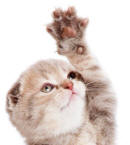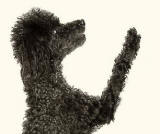Glossary

Gait
The pattern of movement of animals during (terrestrial) locomotion.
Gaits used by cats and dogs include the walk, the amble, the pace, the trot, the canter and the gallop.
Gaits used by cats and dogs include the walk, the amble, the pace, the trot, the canter and the gallop.
Limb
An appendage to the main body of an organism.
For example, an arm, leg, flipper or wing.

For example, an arm, leg, flipper or wing.

Forelimb
Either of the cranial (anterior) limbs.
Hind Limb
Either of the caudal (posterior) limbs.
Contralateral
Relating to the opposite side of the body.
For example, diagonally contralateral limbs are limbs on diagonally opposite sides of the body.
For example, diagonally contralateral limbs are limbs on diagonally opposite sides of the body.
Ipsilateral
Relating to the same side of the body.
For example, ipsilateral limbs are limbs that are on the same side of the body.

For example, ipsilateral limbs are limbs that are on the same side of the body.

Walk
The slowest of all gaits used by cats and dogs, in which minimum energy is expended.
Three limbs remain on the ground while the fourth is raised and moved forwards.
Three limbs remain on the ground while the fourth is raised and moved forwards.
Trot
A symmetrical, two-beat gait in which diagonally contralateral limbs move in unison.
This is an endurance gait, which allows coverage of ground at a reasonable speed but without expending maximum energy. The trot may, therefore, be maintained for hours.
This is an endurance gait, which allows coverage of ground at a reasonable speed but without expending maximum energy. The trot may, therefore, be maintained for hours.
Amble
A symmetrical, relaxed gait between the walk and the trot, in which the ipsilateral limbs move (almost) in unison.
However, the hind limb is raised and lands very slightly earlier than the forelimb.
However, the hind limb is raised and lands very slightly earlier than the forelimb.





